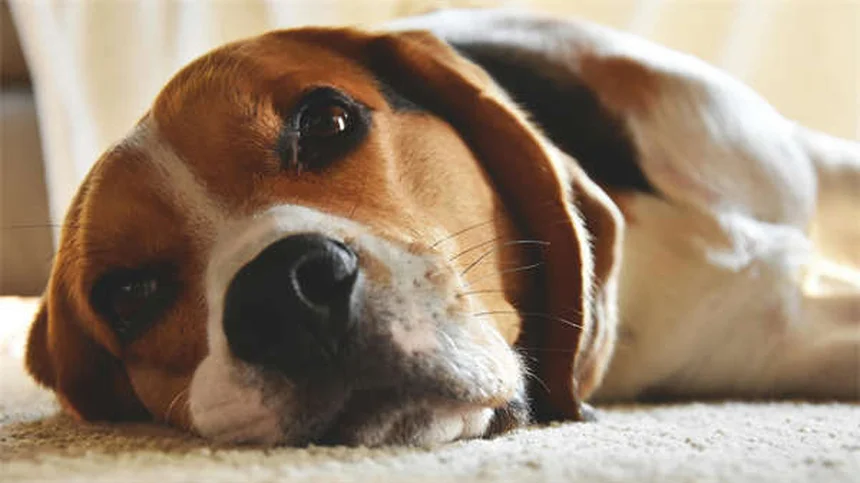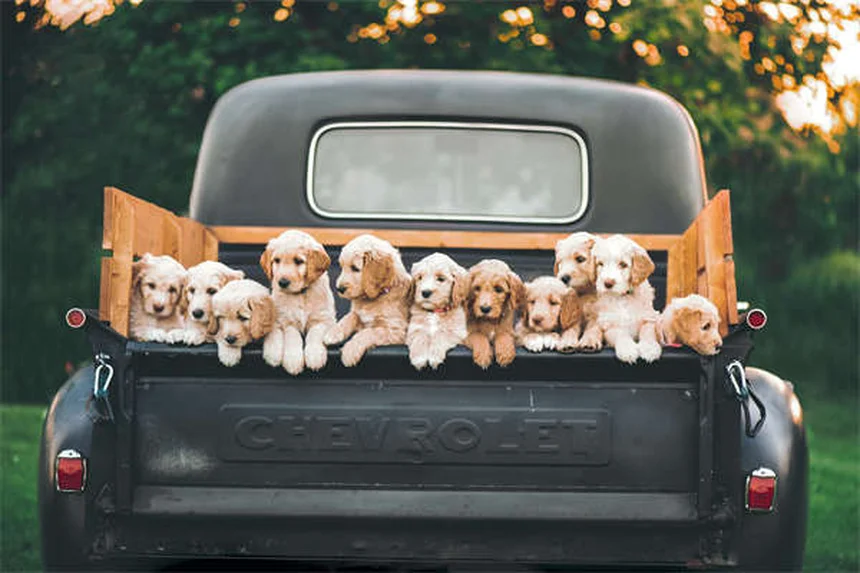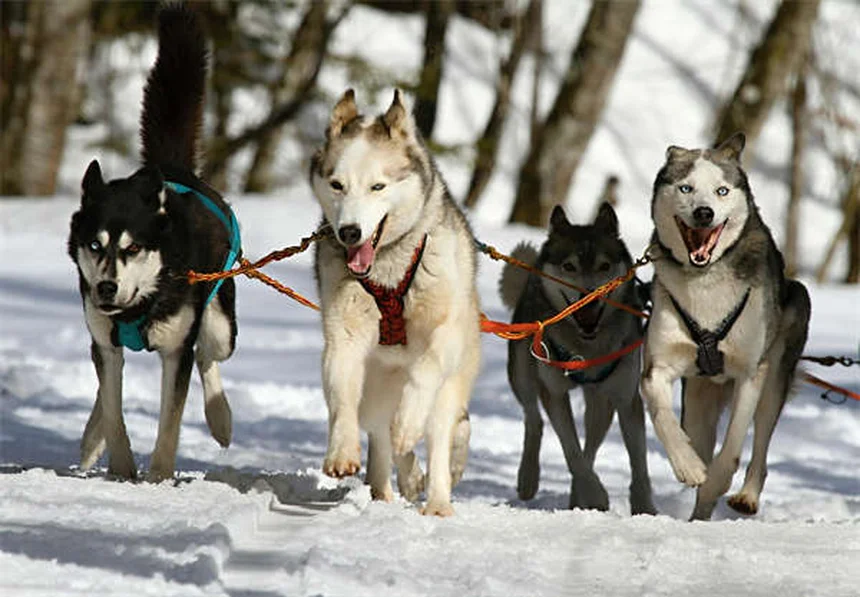6 Clear Signs Your Dog Trusts You (And How to Build More Trust)
Does your dog really trust you? The answer is: Yes, if they show these key behaviors! While we all know our pups love us (those wagging tails don't lie), trust runs deeper. It's what makes your dog feel safe during nail trims, choose to follow your lead at the park, and snuggle up to you at night.I've worked with hundreds of dogs over the years, and I can tell you that trust is the foundation of every great human-dog relationship. The good news? There are clear signs that show your furry friend truly trusts you - from relaxed body language to willingly participating in grooming. Even better? You can actively build more trust through simple daily interactions. Let's dive into the six most telling signs your dog trusts you completely, plus my favorite trust-building techniques that actually work.
E.g. :5 Signs Your Dog Is Having a Panic Attack (And How to Help)
- 1、How to Tell If Your Dog Really Trusts You
- 2、6 Clear Signs Your Dog Trusts You Completely
- 3、Building Unbreakable Trust With Your Dog
- 4、Trust Red Flags You Should Never Ignore
- 5、Trust-Building Games You'll Both Love
- 6、Trust in Different Life Stages
- 7、Trust Beyond Training
- 8、Beyond the Basics: Deepening Your Dog's Trust
- 9、The Science Behind Canine Trust
- 10、Trust-Building Through Play
- 11、Trust in Stressful Situations
- 12、Trust Through Nutrition
- 13、Trust and Training Methods
- 14、Trust Through Life Changes
- 15、FAQs
How to Tell If Your Dog Really Trusts You
We all know our dogs love us - those sloppy kisses and wagging tails don't lie! But trust goes deeper than love. It's the foundation of your entire relationship with your furry friend.
The Trust Test: Does Your Dog Pass?
Think about your last vet visit. Did your pup shake like a leaf or calmly accept treats from the vet? That's the difference between love and trust. When dogs truly trust us, they feel safe even in uncomfortable situations.
Here's a funny way to think about it: Imagine someone you love suddenly tries to brush your teeth. You might love them, but would you trust them enough to keep your mouth open? That's exactly how dogs feel about nail trims and ear cleanings!
6 Clear Signs Your Dog Trusts You Completely
1. Spa Day? No Problem!
When grooming time comes around, does your dog:
- Relax during nail trims?
- Let you brush their teeth without a fuss?
- Stay calm for ear cleanings?
These care tasks can feel weird or uncomfortable for dogs. A trusting dog understands you won't hurt them, even when you're doing something they don't particularly enjoy. My Labrador, for example, used to run at the sight of the nail clippers. Now? He'll actually fall asleep during pedicures!
 Photos provided by pixabay
Photos provided by pixabay
2. You're Their Favorite GPS
Ever notice how your dog keeps checking in with you during walks? That's not just good manners - it's a sign of deep trust.
Dogs who trust their humans will:
| Trust Level | Behavior |
|---|---|
| Low Trust | Ignores you completely, pulls constantly |
| Medium Trust | Occasionally looks back at you |
| High Trust | Regularly checks in, responds to cues |
Just yesterday at the park, I watched as my neighbor's dog kept glancing back at her every few seconds while playing. That's the canine equivalent of saying, "You're my home base in this big, exciting world."
Building Unbreakable Trust With Your Dog
Trust-Boosting Activities You Can Try Today
Want to take your bond to the next level? Here are some simple but powerful ways to build trust:
Choice-based training works wonders. Instead of forcing your dog into positions, try letting them decide. For example, when teaching "sit," wait for them to offer the behavior naturally rather than pushing their bottom down.
Did you know that giving your dog choices actually strengthens your connection? It's true! When I started letting my dog pick which direction to walk in the mornings, our bond improved dramatically.
The Golden Rule of Dog Trust
Here's something important to remember: trust takes time to build but seconds to break. One bad experience can undo months of progress.
Think about it this way - would you trust someone who constantly yelled at you? Probably not. The same goes for our dogs. Positive reinforcement isn't just about training; it's about maintaining that precious trust.
Trust Red Flags You Should Never Ignore
 Photos provided by pixabay
Photos provided by pixabay
2. You're Their Favorite GPS
While we've focused on positive signs, it's equally important to recognize when trust is lacking. Does your dog:
- Hide when you reach for their collar?
- Refuse to take treats from your hand?
- Startle easily when you move suddenly?
These behaviors suggest your pup might not feel completely secure. But don't worry - trust can always be rebuilt with patience and consistency.
The Power of Predictability
Dogs thrive on routine. Establishing clear patterns helps them understand what to expect from you, which builds trust over time.
For example, if you always give a special treat after bath time, your dog will learn to associate something unpleasant (baths) with something positive (treats). This creates trust that even when things are scary or uncomfortable, good things come from you.
Trust-Building Games You'll Both Love
Fun Ways to Strengthen Your Bond
Who says building trust has to be serious? Try these enjoyable activities:
The Name Game: Say your dog's name in different locations. When they look at you, toss a treat. This teaches them that paying attention to you is always rewarding.
Find It: Hide treats around the house and let your dog search. This builds confidence while reinforcing that you're the source of good things.
Remember when we talked about my Labrador and nail trims? We got there by playing "paw games" where he'd touch my hand with his paw for treats. Now he practically offers his paws for clipping!
 Photos provided by pixabay
Photos provided by pixabay
2. You're Their Favorite GPS
Here's a simple test you can try right now: Sit on the floor and call your dog to you. If they come and lean against you or sit in your lap, that's a huge trust indicator!
But what if they don't? Don't panic. This just means you have an opportunity to work on your relationship. Start with short distances and high-value rewards to build positive associations.
Trust in Different Life Stages
Puppies vs. Adult Dogs: Building Trust at Any Age
Is it easier to build trust with a puppy or an adult dog? The answer might surprise you.
While puppies are like sponges ready to soak up new experiences, older dogs often appreciate consistency even more. My friend adopted a senior dog last year, and through patient, predictable routines, they developed an incredible bond in just a few months.
Rescue Dogs and Trust
Working with rescue dogs presents unique trust challenges, but the rewards are immense. Many rescue dogs come with baggage, but they also come with enormous capacity for love and trust.
The key? Go at their pace. Let them approach you first. Use treats, but don't force interaction. Over time, you'll see small signs of trust that mean the world - like the first time they fall asleep with their head in your lap.
Trust Beyond Training
Everyday Moments That Build Connection
Trust isn't just built in training sessions. It's in the quiet moments too:
- When your dog chooses to nap near you instead of alone
- When they bring you their favorite toy
- When they make eye contact just to check in
These small gestures are your dog's way of saying, "I choose you." And isn't that what trust is all about?
The Ultimate Trust Test
Here's something to think about: Would your dog follow you into an unfamiliar situation without hesitation? That's the ultimate sign of trust.
I'll never forget the first time my dog followed me into a new building without pulling back. That moment showed me our bond was stronger than his fear of the unknown. And that's a feeling no dog owner ever forgets.
Beyond the Basics: Deepening Your Dog's Trust
The Secret Language of Dog Trust
You know those times when your dog gives you that slow blink? That's not just them being sleepy - it's actually a sign of deep trust in the canine world. Dogs show trust in ways we often miss because we're not speaking their language.
Here's something fascinating: when dogs feel completely safe, they'll often sigh deeply while lying near you. It's their version of saying, "All is right with the world when I'm with you." My golden retriever does this every night when we settle on the couch, and it melts my heart every time.
Trust Through Touch
Ever notice how your dog leans against you? That's not just them being clingy - it's a major trust indicator. In dog packs, physical contact shows solidarity and safety.
Here's a fun experiment: next time your dog leans on you, gently shift your weight back. If they press harder into you, that's their way of saying, "I've got your back too." It creates this beautiful moment of mutual trust that words can't describe.
The Science Behind Canine Trust
Oxytocin: The Love (and Trust) Hormone
Did you know that when you and your dog gaze into each other's eyes, both of your brains release oxytocin? That's the same hormone that bonds mothers with their babies!
Here's the cool part: researchers found that dogs who stared longer at their owners had higher oxytocin levels. So all those goofy "I love you" stares you share with your pup? They're literally chemically bonding you together through trust.
The 3-Second Rule for Building Trust
Here's a professional trainer trick I learned: when meeting a new dog or working with a shy one, use the 3-second interaction rule.
| Time | Action | Effect on Trust |
|---|---|---|
| 0-3 seconds | Brief pet under chin | Low pressure interaction |
| 3+ seconds | Continuous petting | Can feel overwhelming |
This method works because it respects the dog's boundaries while still building positive associations. I've seen it transform nervous shelter dogs into confident pets within weeks!
Trust-Building Through Play
Tug-of-War: More Than Just a Game
Contrary to old-school thinking, tug games actually build trust when played correctly. The key? Let your dog win sometimes!
When you release the toy voluntarily, you're showing your dog that play is cooperative, not competitive. This creates trust that you're a fun, fair playmate. My pitbull mix goes nuts when I say "You got it!" and let her triumph with her rope toy.
Hide and Seek: The Ultimate Trust Game
Want to see your dog's trust in action? Play hide and seek in your house! Here's why it works:
When your dog searches for you, they're demonstrating faith that you're worth finding. And when they do find you? The celebration is pure joy. Pro tip: start with easy hiding spots and gradually increase difficulty as your dog gets better at the game.
Trust in Stressful Situations
Thunderstorms and Fireworks: Trust Under Pressure
How does your dog react during loud noises? Their behavior shows exactly how much they trust you to keep them safe.
A truly trusting dog will seek you out for comfort during scary events. I'll never forget when my normally independent husky crawled into my lap during her first thunderstorm - it was the clearest "I need you" moment we've ever shared.
Vet Visits Made Easier Through Trust
Ever wonder why some dogs seem calm at the vet while others panic? It's all about pre-visit trust building.
Try this: make weekly "vet practice" sessions where you gently handle your dog's paws, ears, and mouth while giving treats. When actual vet visits come around, your dog will associate the handling with positive experiences. My vet calls this "trust banking" - you're making deposits now for withdrawals later.
Trust Through Nutrition
Food Bowl Trust Exercises
Here's a radical idea: sometimes hand-feed your dog instead of using a bowl. This ancient wolf-pack behavior builds incredible trust.
When you feed by hand, you're saying, "I provide for you" in the most basic way. Start with one meal a week this way, and watch how your dog's eye contact and responsiveness improves. It's like magic!
The Trust Test at Meal Times
Want to know how much your dog trusts you? Try this simple test during dinner:
While they're eating, calmly walk by and drop an extra-special treat in their bowl. A trusting dog will keep eating happily. An unsure dog might back away. This shows their comfort level with you near their resources.
Trust and Training Methods
Positive Reinforcement vs. Fear-Based Training
Why does positive reinforcement build better trust? Because it's based on mutual respect rather than intimidation.
Think about it - would you trust a boss who yells or one who rewards good work? Exactly. Dogs trained with treats and praise develop deeper bonds because they associate you with good things, not stress.
The Recall Trust Factor
Nothing tests trust like recall training. When your dog comes sprinting back to you despite distractions, that's pure trust in action.
Here's a funny story: my dog once abandoned a squirrel chase mid-stride when I called her. The squirrel looked as shocked as I felt! That moment proved our trust was stronger than her prey drive.
Trust Through Life Changes
Moving Homes Without Losing Trust
Big life changes can test your dog's trust, but they're also opportunities to strengthen it. When I moved cross-country with my dog, here's what worked:
I set up her bed and toys first in the new place, creating instant familiarity. Then we explored together, with me acting confident to reassure her. Within days, she was her normal self because she trusted me to navigate this change.
Introducing New Family Members
Bringing home a baby or new pet? Your dog's reaction shows their trust in your leadership.
A trusting dog will look to you for cues on how to react. I helped my cousin introduce her newborn by having her let the dog sniff the baby's blanket first. The dog's calm acceptance showed she trusted her humans to bring good things into their pack.
E.g. :How do I know if my dog trusts me/has a connection to me : r/dogs
FAQs
Q: How can I tell if my dog trusts me during grooming?
A: If your dog stays relaxed during nail trims, teeth brushing, or ear cleaning, that's a huge trust indicator! Most dogs find these activities weird or uncomfortable at first. A trusting dog understands you won't hurt them, even when doing something they don't enjoy. My Labrador used to bolt at the sight of nail clippers, but now he'll actually doze off during pedicures. The key is going slow, using positive reinforcement, and never forcing them. When your pup willingly participates in care tasks, it shows they truly believe in you.
Q: Why does my dog keep looking at me during walks?
A: Those frequent check-ins are golden trust signals! When your dog pauses to make eye contact or glance back at you during walks or play, they're essentially saying "You're my safe place in this big world." It shows they value your presence and guidance over all the exciting distractions. I've noticed dogs with strong trust bonds will check in every 10-30 seconds during outdoor adventures. This behavior develops over time as you prove yourself reliable and rewarding to be around.
Q: What body language shows a dog trusts you?
A: Look for these relaxed signals: soft, squinty eyes; loose wiggly body; tail wagging that moves their whole rear end; and willingly leaning into your touch. My rescue dog used to stiffen when petted, but now she melts into my hand - that's the power of earned trust! Avoidance, tense muscles, or ducking away suggests they're not completely comfortable yet. Remember, trust shows up in the small moments, like when they sigh and stretch out next to you.
Q: How can I rebuild trust if my dog seems wary of me?
A: Start with predictable routines and choice-based interactions. Let your dog decide when to approach you, which path to walk, or whether to engage in training. I helped a fearful rescue by simply sitting on the floor with treats, letting him come to me at his pace. Within weeks, he was seeking me out! Avoid sudden movements or loud corrections. Instead, focus on being a consistent source of safety and good things. Trust can always be rebuilt with patience.
Q: Why does my dog follow me everywhere?
A: While some following is normal, constant shadowing can actually signal anxiety rather than trust. A truly trusting dog will feel secure enough to relax in another room knowing you'll return. The healthiest bonds allow for both connection and independence. If your pup seems overly attached, work on building their confidence through short separations and rewarding calm behavior. My rule? A happy medium where they check in often but don't panic when you're out of sight.







